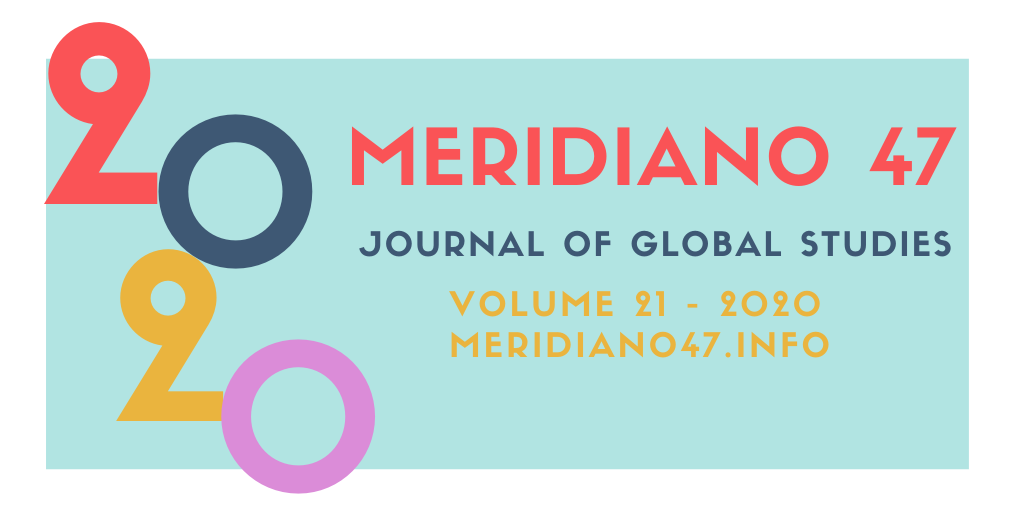O programa nuclear iraniano e o regime de não-proliferação: dilemas para o futuro
DOI:
https://doi.org/10.20889/M47e21007Palavras-chave:
Irã, Estados Unidos, Questão nuclear, Regime de não-proliferaçãoResumo
O programa nuclear iraniano causa receios e inquietações há tempos, existindo suspeitas de que o país almeje a utilização da energia nuclear para fins militares, tornando-se uma potência nuclear ilegítima. Décadas de sanções e iniciativas de negociação não têm alcançado resultados satisfatórios. O presente artigo visa analisar o atual quadro da questão nuclear iraniana, argumentando que reflete controvérsias e dificuldades intrínsecas do regime de não proliferação nuclear.
Downloads
Referências
Arms Control Association. “Timeline of Nuclear Diplomacy with Iran.” 2019. https://www.armscontrol.org/factsheet/Timeline-of-Nuclear-Diplomacy-With-Iran (acesso em 11 de January de 2020).
Bahgat, Gawdat. “Nuclear Proliferation: The Islamic Republic of Iran.” International Studies Perspectives 7 (2006).
Bowen, Wyn Q., e Joanna Kidd. “The Iranian Nuclear Challenge.” International Affairs 80, nº 2 (2004).
Burr, Willian. “A brief history of U.S.-Iranian nuclear negotiations.” Bulletin of the Atomic Scientists, jan./feb. 2009.
Carasales, Julio C. El desarme de los desarmados: Argentina y el Tratado de No Proliferación de Armas Nucleares. Buenos Aires: Pleamar, 1987.
Cirincione, Joseph. Bomb scare: The history & future of nuclear weapons. New York: Columbia University Press, 2007.
Cohen, Eliot, Eric Edelman, e Ray. Takeyh. “Time to get tough on Tehran: Iran policy after the deal. .” Foreign Affairs, Jan./Feb de 2016.
Duarte, Sergio de Queiroz. Desarmamento e temas correlatos. Brasília: FUNAG, 2014.
Exame. Acordo nuclear não é perfeito, mas é melhor do que nada, diz Merkel. 18 de maio de 2018. https://exame.abril.com.br/mundo/acordo-nuclear-nao-e-perfeito-mas-e-melhor-do-que-nada-diz-merkel/ (acesso em 18 de outubro de 2018).
Fitzpatrick, Mark. “Nuclear latency with an attitude.” Politics and Strategy: The Survival Editor’s Blog. 7 de October de 2014. https://www.iiss.org/en/politics%20and%20strategy/blogsections/2014-d2de/october-931b/nuclear-latency-c8a6 (acesso em 3 de Jule de 2016).
Forge, John. “A Note on the Definition of “Dual Use”.” Science and Engineering Ethics 16 (2010): 111-118.
Hymans, J.E.C., e M. S. Gratias. “Iran and the nuclear threshold.” The Nonproliferation Review 20, nº 1 (2013).
International Atomic Energy Agency. IAEA and Iran: chronology of key events. 2019. https://www.iaea.org/newscenter/focus/iran/chronology-of-key-events (acesso em 7 de January de 2020).
International Atomic Energy Agency. “Verification and monitoring in the Islamic Republic of Iran in light of United Nations Security Council resolution 2231 (2015).” 2018.
“Joint Comprehensive Plan of Action.” 2015.
Jones, P. “Learning to live with a nuclear Iran.” The Nonproliferation Review 19, nº 2 (2012).
Krzyzaniak, J. “No, Iran didn’t exit the nuclear deal. And no, its nuclear announcement is not revenge for Soleimani.” Bulletin of the Atomic Scientists. 6 de January de 2020. https://thebulletin.org/2020/01/no-iran-didnt-exit-the-nuclear-deal-and-no-its-nuclear-announcement-is-not-revenge-for-soleimani/ (acesso em 10 de January de 2020).
Laub, Zachary, e Kali Robinson. “What is the status of the Iran nuclear agreement.” Council on Foreign Relations. 2020. https://www.cfr.org/backgrounder/what-status-iran-nuclear-agreement (acesso em 9 de January de 2020).
Leães, Ricardo Fagundes. “O sucesso das negociações do programa nuclear iraniano.” Conjuntura Austral 6, nº 31 (2015).
Litwak, Robert. Iran’s Nuclear Chess: After the Deal. Washington: Woodrow Wilson Center for Scholars, 2015.
Milani, A. “What the Soleimani killing means for the Iran nuclear deal.” Bulletin of the Atomic Scientists. 5 de January de 2020. https://thebulletin.org/2020/01/what-the-soleimani-killing-means-for-the-iran-nuclear-deal/ (acesso em 10 de January de 2020).
Mineiro, Michael. Space Technology Export Controls and International Cooperation in Outer Space. New York: Springer, 2012.
Missile Defense Project. ““Missiles of Iran”.” Missile Threat, Center for Strategic and International Studies. 14 de June de 2018. https://missilethreat.csis.org/country/iran/ (acesso em 9 de January de 2020).
Nakashima, Ellen, e Joby Warrick. ““Stuxnet was work of US and Israeli experts, officials say”.” The Washington Post, 2 de June de 2012.
Office of Technology Assessment. Technologies Underlying Weapons of Mass Destruction. Washington: U.S. Government Printing Office, 1993.
Rocha, Antônio Jorge Ramalho da, e Pérola Mourão de Souza Sardo de Abreu Pereira. “. Iran Talks: Das palavras aos atos. A Declaração de Teerã e o Plano de Ação Conjunto de Genebra em perspectiva.” Contexto internacional 36, nº 2 (2014).
Sebenus, James K., e Michael K. Singh. “Is a Nuclear Deal with Iran possible?: An Analytical Framework for the Iran Nuclear negotiations.” International Security 37, nº 3 (2012).
Sherrill, C. W. “Why Iran Wants the Bomb and what it means for US Policy.” The Nonproliferation Review 19, nº 1 (2012).
United States Department of State. “A report on the international control of atomic energy.” Publication 2498, 1946.
””. “The Acheson-Lilienthal & Baruch Plans, 1946.” Office of the Historian. 2016. https://history.state.gov/milestones/1945-1952/baruch-plans (acesso em 28 de Janeiro de 2016).
Waltz, Kenneth N. “Why Iran should get the bomb: nuclear balancing would mean stability.” Foreign Affairs, jul./aug. de 2012.
Zarif, Javad. ““We have NOT violated the #JCPOA. Para 36 of the accord illustrates why: We triggered & exhausted para 36 after US withdrawal. We gave E3+2 a few weeks while reserving our right. We finally took action after 60 weeks. As soon as E3 abide by their obligati.” Twitter: @JZarif. 1 de Jule de 2019.
Downloads
Publicado
Como Citar
Edição
Seção
Licença
Copyright (c) 2020 Meridiano 47 - Journal of Global Studies

Este trabalho está licenciado sob uma licença Creative Commons Attribution 4.0 International License.



